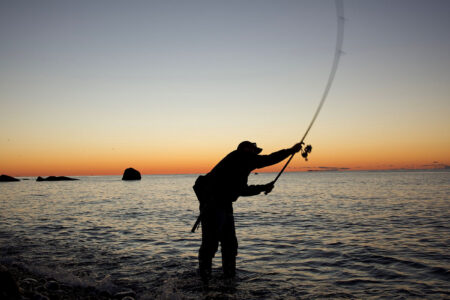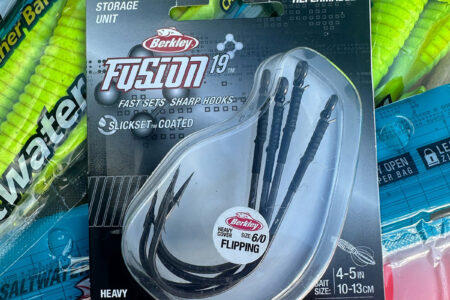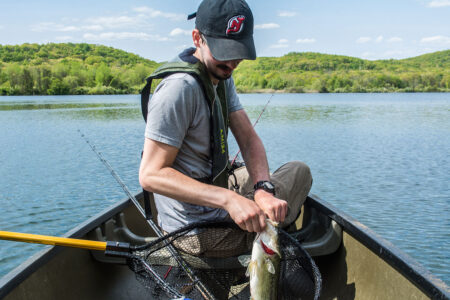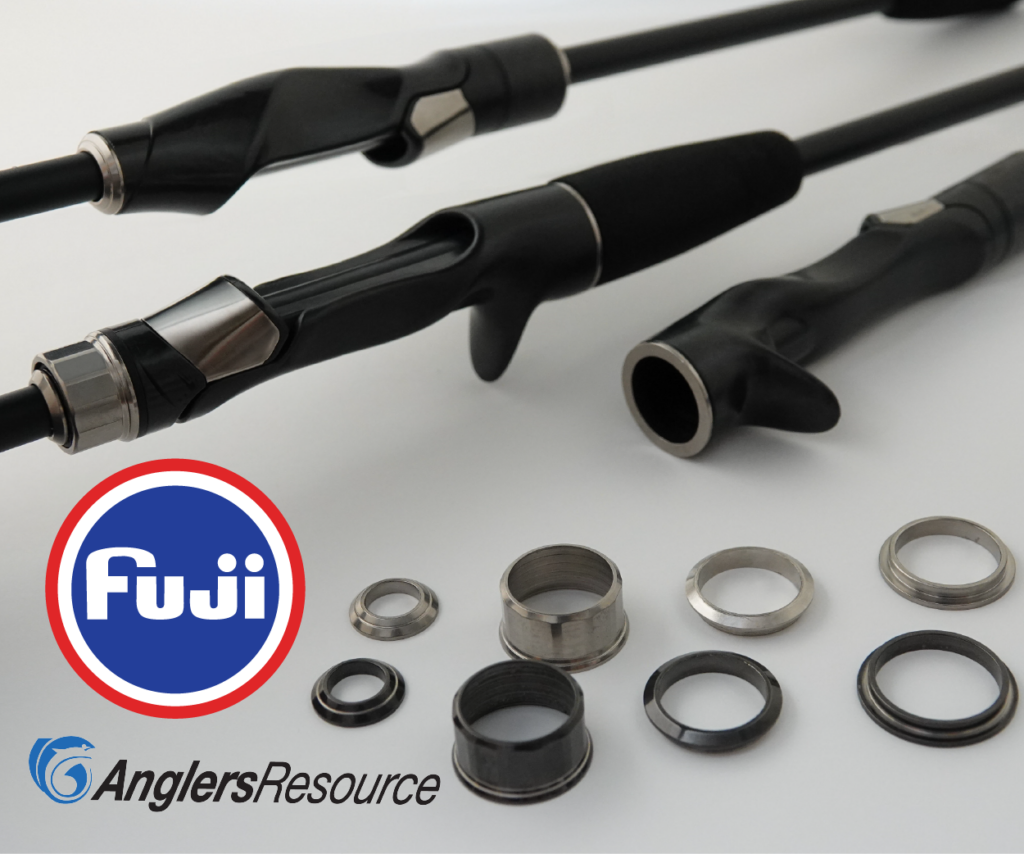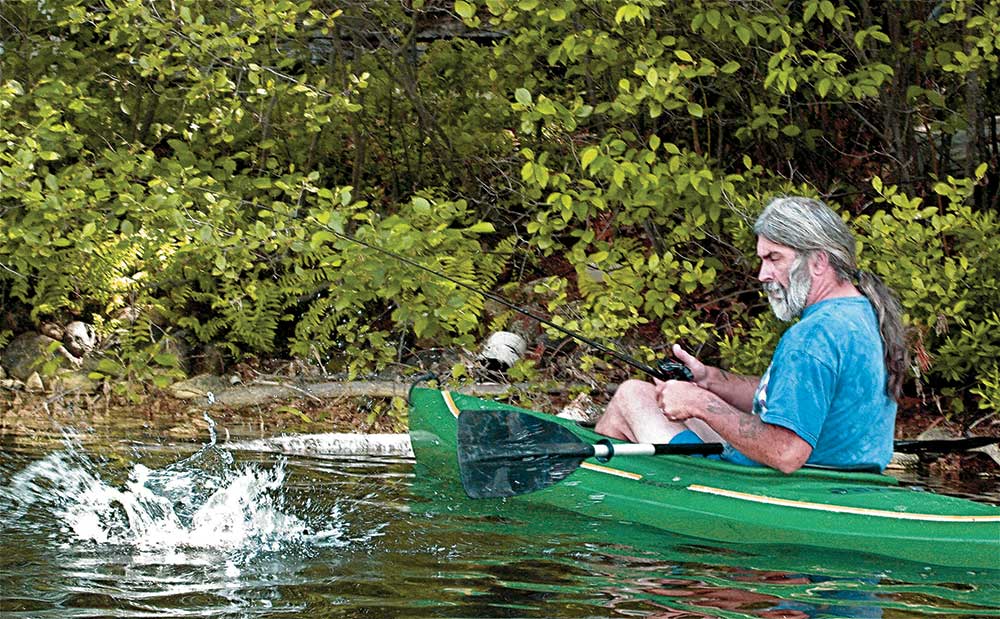
Sometimes you win, and sometimes you lose, but sometimes you simply get smoked!
I’m a believer that the whole business of locating, casting to, and catching fish is heavily weighted to the fish’s advantage. After all, they live in the water, as they have for millions of years, building up a collective store of knowledge that makes them supremely adapted to their environment. Meanwhile, humans are reduced to spending untold thousands of dollars on technologies that we mistakenly believe will somehow even the odds for us.
Case in point: I dragged my kayak out of the garage one morning, lashed it to the top of my car, and headed to the southern of the two great islands on Lake Champlain. I put in at a Fish and Wildlife access located between the towns of South Hero and Grand Isle, Vermont and paddled parallel to the shore, making casts to the docks and rock walls. The water was shallow, perhaps 3 feet deep. I’d chosen a top-water lure, as I often do. This has little or nothing to do with my relative success rate with surface plugs. If you think of it, most fish strike at their prey underwater. Nonetheless, I like them because, (a) it’s so cool to watch the fish come up behind them, track the lure down, and then spray water all over the place when they hit, and (b) watching a plug chug along the surface gives me something to do, particularly on those occasions when I have limited confidence that there may actually be any fish nearby.
For a while, the whole scene had the appearance of a sell-fulfilling prophecy. I made casts and watched my plug splash about, while the fish studiously ignored the entire process. It’s a lucky thing that I’m one of those people who professes not to care whether he ever catches anything.
Still, I was having a perfectly good time placing my casts in those unlikely spots that I normally have trouble hitting, like right up against the bank instead of into the branches of a tree. I plunked a particularly neat cast right at the corner formed by a boat dock and the shore, congratulated myself on my deft touch, waited for the ripples to dissipate, and began my retrieve. I saw a fish dart out from under the shadow of the dock and give chase. The take was subtle, I saw the open mouth of the fish just under my lure and then both of them disappeared. I pulled back and…
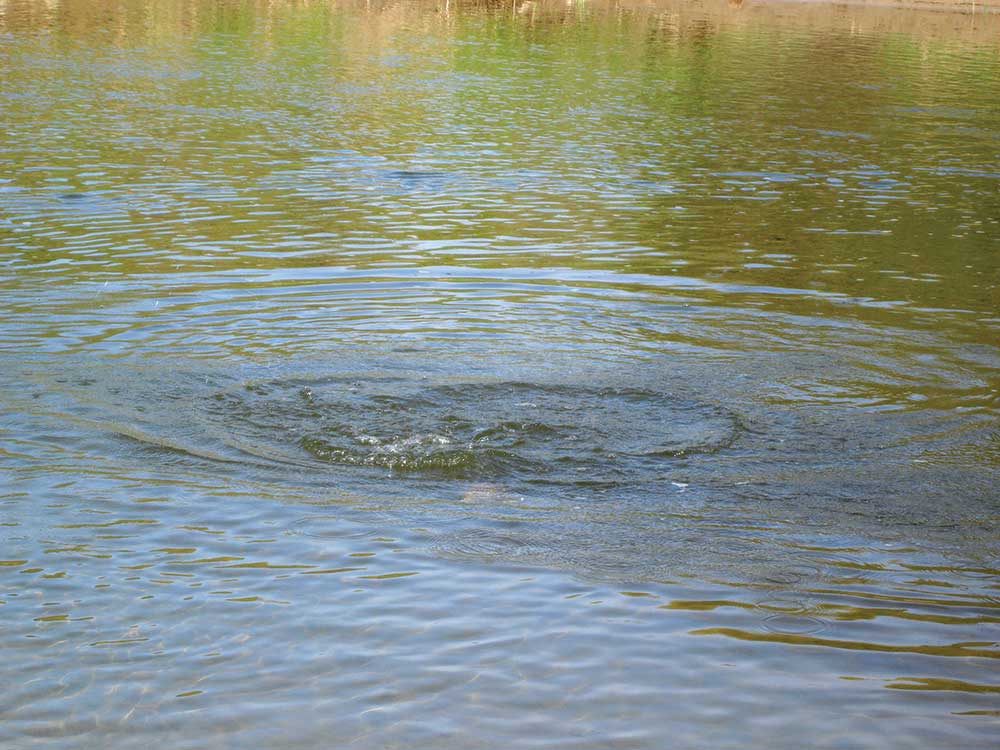
Nothing, absolutely nothing. The line went limp, signaling that it had broken. The fish had cut through it on the strike and it looked like I’d also lost a lure in the process. It was not a good moment. But then something happened to make the whole incident even more remarkable. I looked back to the spot where the fish had hit and saw my lure bobbing gently on the surface. I hadn’t lost my lure. Everything was just peachy! Well, it was until I gave the whole sequence of events some thought.
A fish inhales its prey and tastes the water surrounding what it’s taken in to see if it’s actually something good to eat. This works because a steel hook has a very different flavor from a frog, for example. Try it yourself if you don’t believe me. If the fish’s palate isn’t pleased, it spits out your offering, leaving you wondering about what might have been. That’s nothing to be ashamed of; you’ve merely been beaten in a fair, head-to-head competition. However, my situation was pitiful by comparison. Consider that by the time I’d tried to set the hook on my fish, it had already cut the line with its teeth and dragged my lure under, presumably never to be seen again. But this fish had beaten me a second time. Not only did it nick the line, but it also had enough time afterward to dismissively spit my plug back out. The lure then unceremoniously rose to the surface, the final signal that I had not just lost the contest—I’d been smoked.
The worst of this kind of drubbing can come from what is initially misinterpreted to be a winnable fight. On those occasions, the angler is completely unable to understand that he has no real business even being a participant. By refusing to see what is going on directly in front of him, he is dragged inexorably to his own defeat. I have spent the better part of a half-century getting my butt handed to me in this manner.
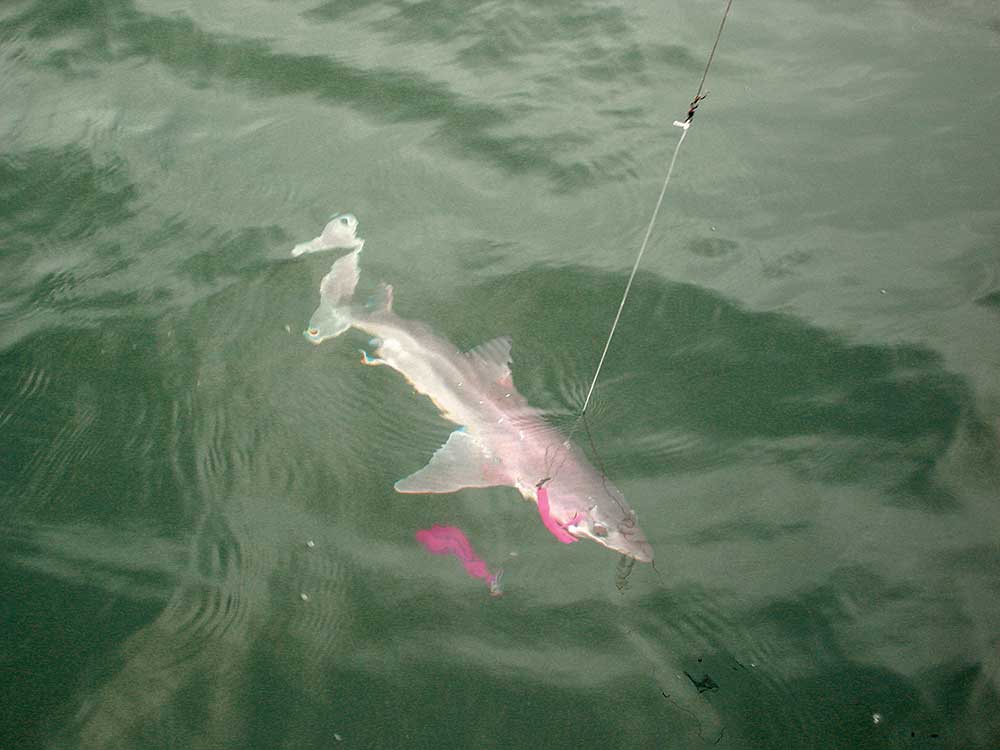
Several years ago, I went fishing at one of my favorite spots in Loiza, Puerto Rico, which is about a half-hour drive to the east of San Juan. I’d only just parked my car at Playa Vacia Talega, which is the beautiful beach located just to the west of the town center, when I saw that a school of baitfish was getting pummeled by something infinitely larger, about 50 or 60 feet offshore. I couldn’t see any signs of the predators themselves though, as they were well below the surface corralling the bait. With increasing frequency, the mass of baitfish erupted, sending themselves and droplets of water flying up into the air. I pulled out a medium-heavy weight St. Croix Premier rod that I’d rigged with a Shimano Sphereos 4000 reel spooled with 15-pound test braided line. I tied on an 18-inch leader made from 30-pound fluorocarbon line and attached a 3/4-ounce Little Cleo lure. You might assume the manufacturers of these fine products would be grateful for what appears to be a not-so-subtle plug, but they may have very different feelings before I’m done here. I have a way of making unfortunate things happen with even the best of gear.
I tossed the lure over the middle of the school and began to retrieve. Within a few seconds, I had a strike and I set the hook. My fish (and I use the possessive here lightly) headed determinedly, but with no real sense of urgency, straight away from shore. A big fish will do this and what you have to do is to gently apply pressure to turn it. I angled my rod tip to the left, but the fish continued on its course. I switched directions, but the effect was negligible. While the fish didn’t appear to speed up, it nonetheless kept moving away from me, taking line steadily off the reel.
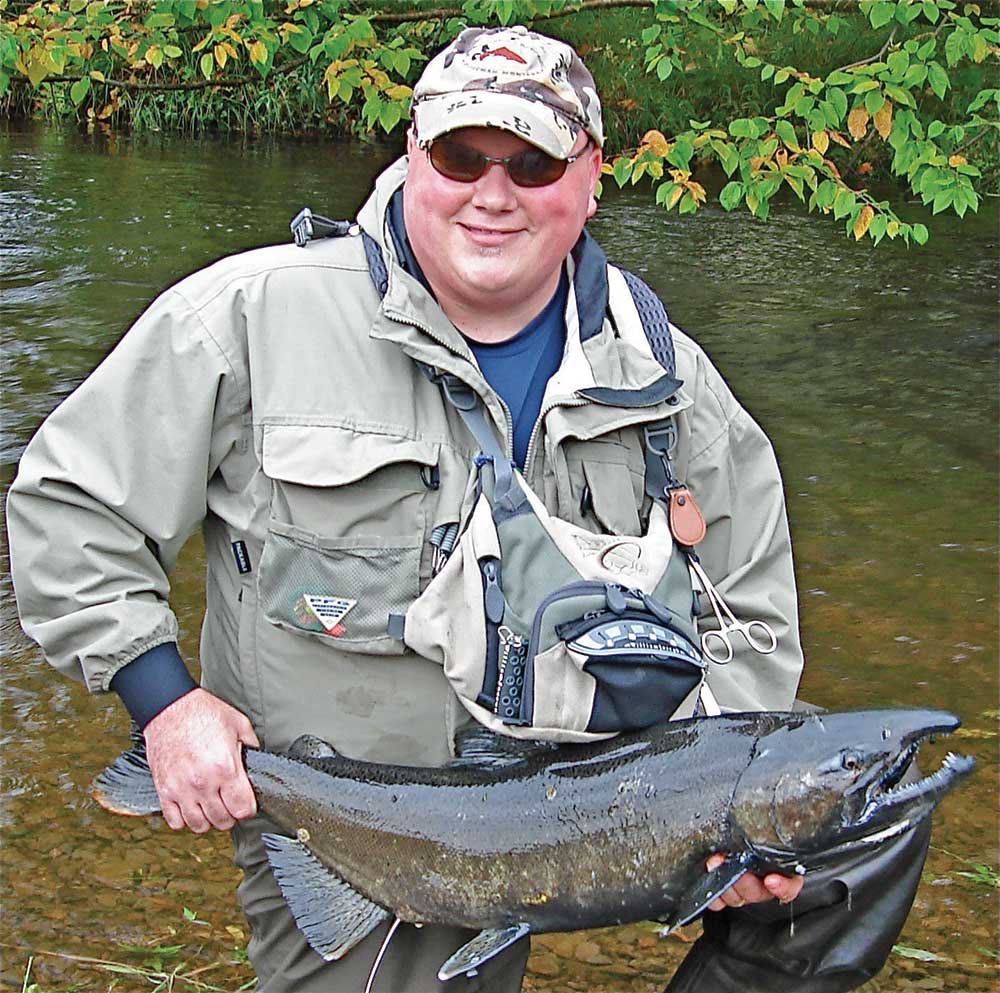
I had about 200 yards of braided line on my spool and another 20 yards of backing, so I felt confident that my fish would soon decide to move one way or another, at which point I’d be ready to run along the beach to keep up with it. I’ve done this with big salmon and with stripers, so I figured that I had the situation in hand. For its part, the fish just kept hauling line out. There was a steady pace to it, like a winch pulling a car out of a ditch. It might have been mesmerizing had I not realized that the fish by then had taken more than half the line off my reel, with absolutely no difficulty. I suppose an optimist might have felt that there was still almost a half a reel to go, but I quickly calculated that at its present pace, the fish was apt to strip all of my line in another minute or two. This whole deal was devolving into a rout. I watched the rest of my line wind off and with a faint “ping” the knot gave out that held everything onto the spool. I was left with a numb sensation in my gut as I looked out at the water. I had never seen the fish that had done this. I will never know what species it was or how big it might have been. Worse yet, this wasn’t even a good “one-that-got-away” tale. The fish, for its part, might not have even realized that it had been hooked.
I suppose one of the great truths about fishing is that we can’t always see what’s lurking beneath us and that this gives the fish every opportunity to exploit our weaknesses. I’m sure that they enjoy every minute of it too. We’re just lucky that most of them can’t crawl up onto the shore, hand us back our lures and then thrash the living hell out of us.
